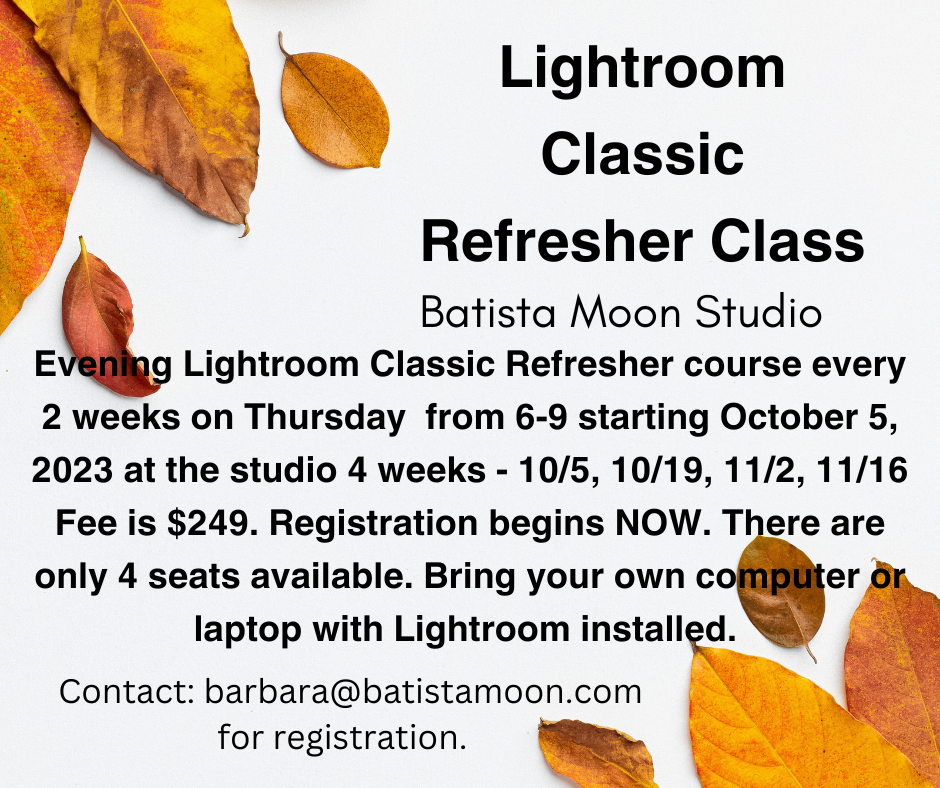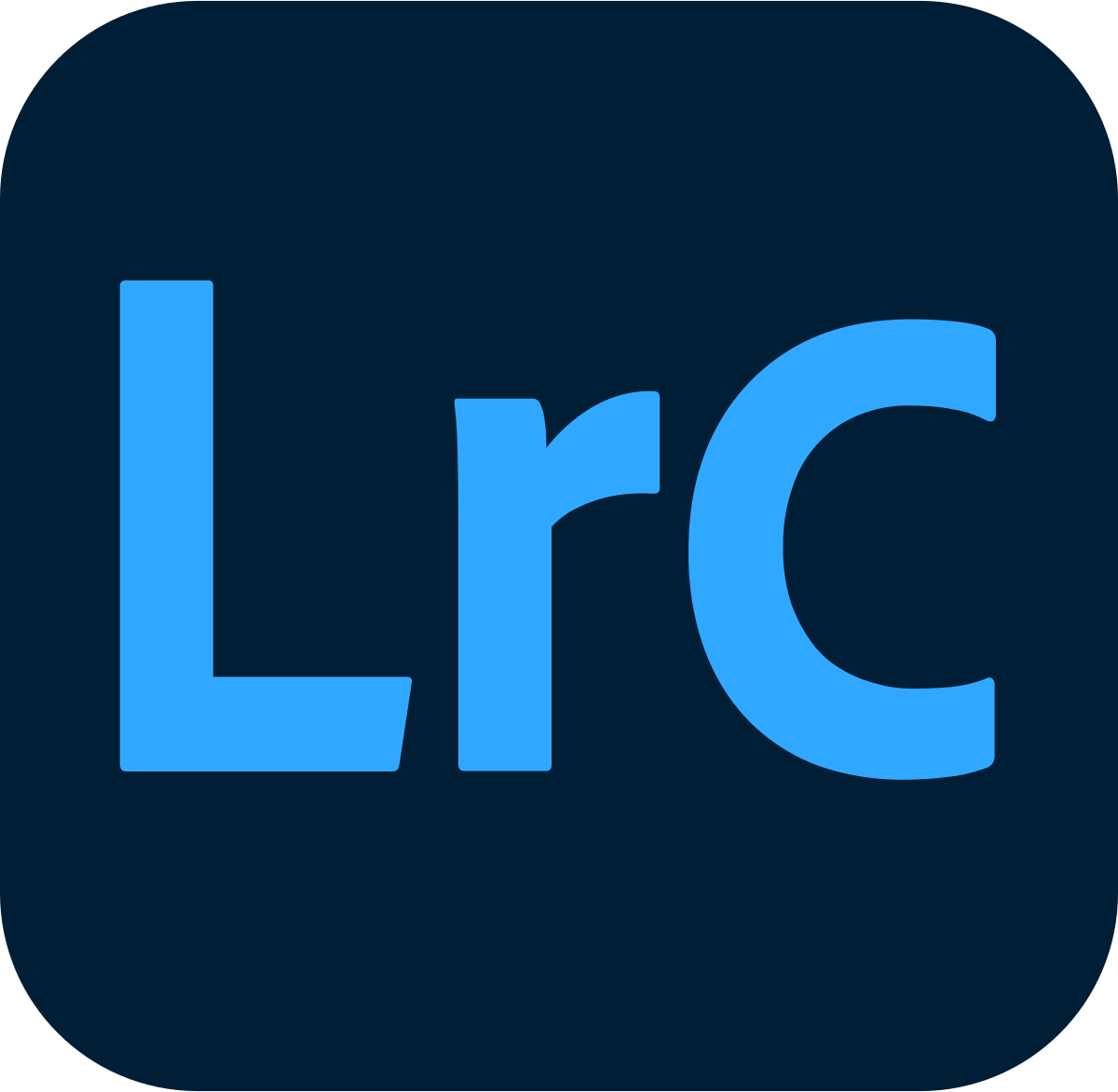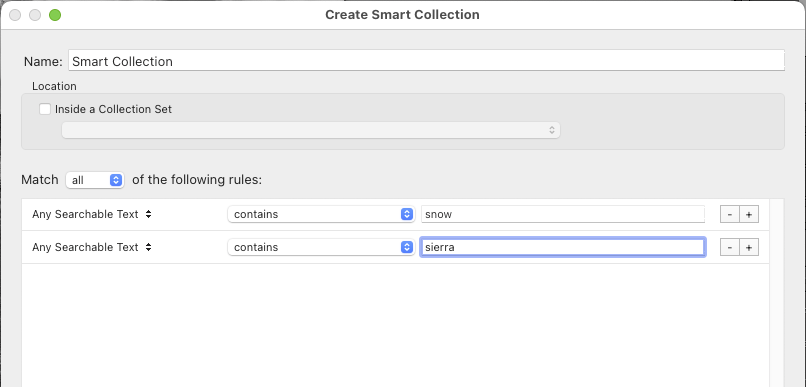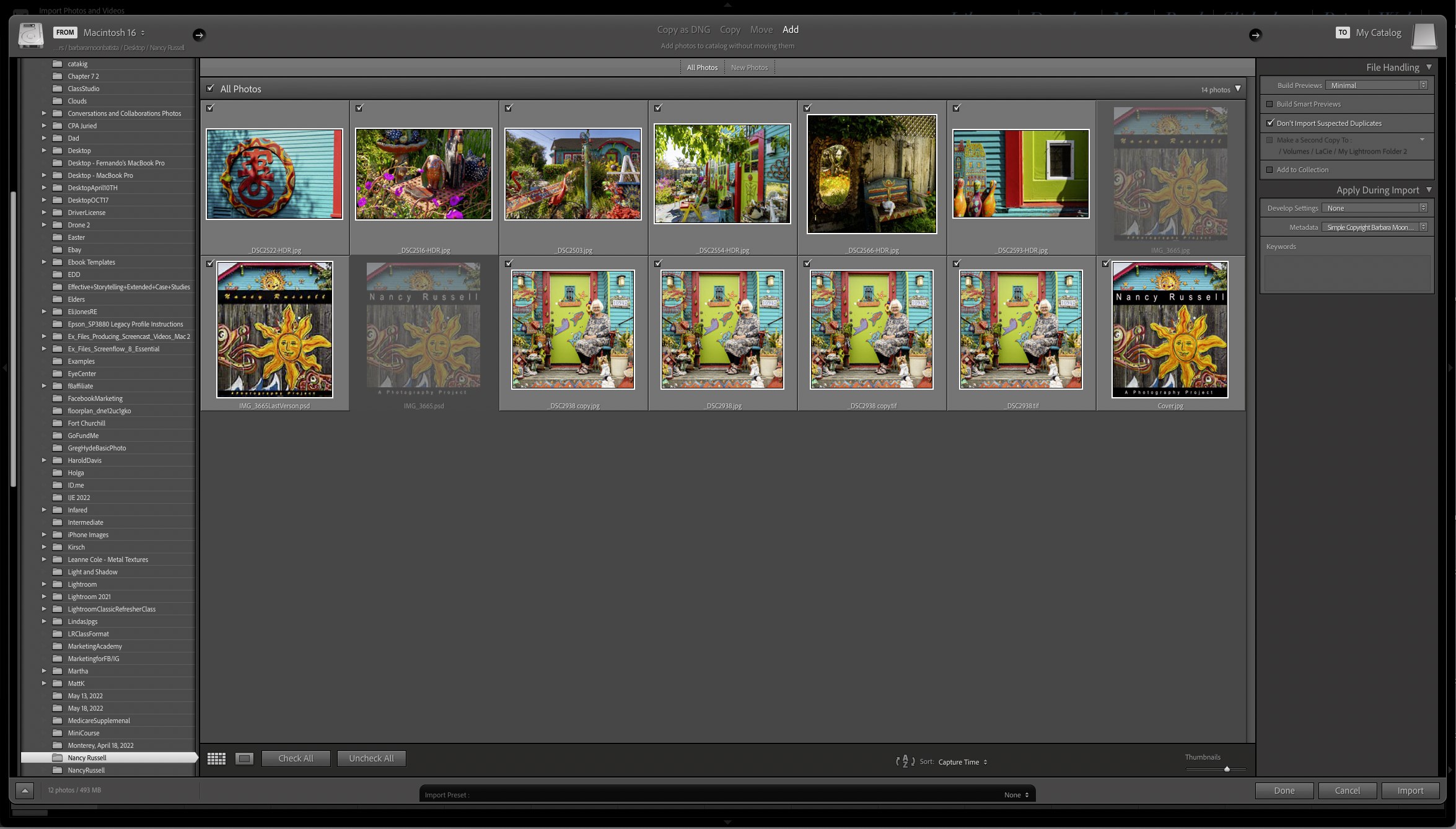Struggling with the upgrades Adobe has added in the past few months?
The biggest ones have been in the Develop Module with the addition of brush masking tools, sky replacement etc. . It has made Lightroom Classic a much more robust program but also created a learning curve for many of us.
I am offering an evening Lightroom Classic Refresher course every 2 weeks on Thursday from 6-9 beginning on October 5, 2023 at the studio for 4 weeks (10/5, 10/19, 11/2, 11/16). Fee is $249. Registration begins NOW. There are only 5 seats available. Bring your own computer or laptop with Lightroom installed.
This is not a course for beginners but a refresher for those who have been using Lightroom and want to Improve their skills.
We will start with a review of the Import process and try to trouble shoot any issues you might be having with how your library is set up. I will not be addressing catalog issues in this course.
We will then review the Develop Module and the new masking tools introduced in the new version of Lightroom Classic 11 & 12. You may have upgraded to Lightroom 11 or 12 for the new features and bug fixes. The assumption is that you have upgraded to the Lightroom Classic 11. If you have decided to stay with the older version of Lightroom Classic 10.4 or earlier, you can still benefit from this refresher course.
Please email me at barbara@batistamoon.com with your interest or questions. You can also respond through this post. I look forward to working with you as I am very passionate about Lightroom and want you to succeed in your photographic efforts. Join me as we explore the new features and reviews.
Email: barbara@batistamoon.com











































